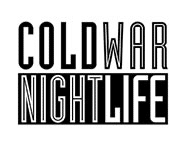Ministry’s first iteration is still an embarassment to Al Jourgensen, but its second form moved closer to the heavy duty beats coming from Adrian Sherwood’s studios.
Twitch, the album Jourgensen recorded with Sherwood, isn’t one of his favourites, but contained some outstanding songs. “We Believe” was roughened at the legendary Hansa Tonstudio in Berlin, and it didn’t lose any of its edginess in the transition to the stage.
This clip is from Ministry’s performance in Toronto. The line-up for the night included Ogre from Canuckian heroes, Skinny Puppy.









 Machinista’s third studio album is an evolution from those that preceded it. The band’s live show has developed in the four years that have intervened since the last one, too – away from the traditional synth duo structure to a fuller pop-rock act with a guitarist in a bird mask.
Machinista’s third studio album is an evolution from those that preceded it. The band’s live show has developed in the four years that have intervened since the last one, too – away from the traditional synth duo structure to a fuller pop-rock act with a guitarist in a bird mask. 13 Ghost Stories is the second concept album from the Jean-Marc Lederman Experience. Coming four years after The Last Broadcast on Earth, it is even more ambitious than its predecessor.
13 Ghost Stories is the second concept album from the Jean-Marc Lederman Experience. Coming four years after The Last Broadcast on Earth, it is even more ambitious than its predecessor.